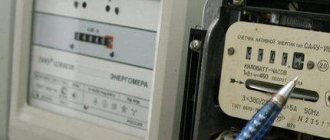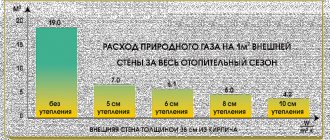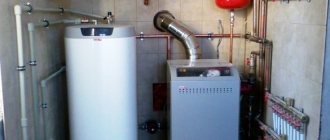Before you buy gas appliances, you can find out their efficiency using your calculator. Read about stove efficiency and calculate how much gas a gas stove consumes at standard settings. Agree, it’s better to figure it out one day, rather than read articles one after another. Our article will be extremely useful for you.
There is nothing complicated in physical formulas if you understand the essence of the issue. We will teach you this. Based on the formulas, they determine how much fuel the device uses per hour of active operation and how well it works in general. We will reveal the technical side of the issue. At the everyday level, you will decide for yourself what needs to be done.
Gas stoves have different fuel consumption for the same operation. Sometimes burners with a double difference in power give the same effect. The stoves have burners on the hob, and some models are also equipped with gas ovens. In this article we have collected information about the power of burners and gas stoves that you should pay attention to.
Why do you need to know gas consumption?
Household meters are used to know how much blue fuel was consumed over a certain period. But in order to install a meter, you must initially know how much blue fuel is consumed per month. It is not the average indicators that are taken into account, but the maximum parameters. For example, if hot water is turned off in the house and you will have to often use the kitchen stove to heat it.
What is this data for? It’s very simple - each meter is designed for a certain amount of fuel consumed. If the power of the stove is small and there are no other devices or appliances in the house that run on gas, you can get by with the simplest and most inexpensive meter. If a water heater and individual heating are additionally used, the throughput of the meter should be much greater. You will also need to replace the gas pipeline pipes, choosing a configuration with a larger diameter.
How to calculate household gas consumption by power so that you can choose the “right” meter?
These data are given in the instructions for the stove. If documents are lost or problems arise with translating the data specified in the passport for kitchen appliances, you can use average indicators: a 4-burner stove consumes 1-1.3 m³/hour.
Installation
Requirements for the cylinder:
- presence of a gearbox;
- pressure - 300 mm water column;
- productivity of the 1st phase - 1 m³/h.
For installation, you will need a flexible hose with an internal diameter of at least 1.2 cm and a length of no more than 250 cm. Use only a special hose - for propane-butane. When connecting, do not twist or bend the hose near the ends. If you have to bend the hose, then the radius should be greater than 90 mm along the outer outline. The beginning of the bend is no closer than 50 mm to the tip. No kinks should be allowed; adapters and corner connections should be used. An excessively long hose is secured to intermediate supports. A valve is installed directly in front of the water heater to shut off the fuel supply. After completing the installation, check all connections and the hose for leaks.
Information in GOST
Information about burner power is strictly regulated by GOSTs, and if the stove has the appropriate certificates and is approved for installation in an apartment or residential building, it must comply with these parameters. Thus, in residential buildings it is allowed to install gas stoves with 2, 3 or 4 burners, the standard power of which should be:
- 0.6 kW - reduced;
- 1.7 kW - average;
- 2.6 kW - high.
Information on burner power is in GOST
Additionally, it is worth calculating the power of the oven, the average performance of which is within 2.5 kW.
The final parameters will be about 10 kW. Many people ask how they can increase the power of a gas burner if it is insufficient or if they need to switch the stove from liquefied gas to the mains. Despite the fact that many experts give advice on how to do this correctly and what manipulations should be carried out with the valves, the burner itself, and the reducer, all these methods are illegal and unacceptable in relation to gas appliances. Such re-equipment can lead to accidents at home and huge fines from the gas service. If the power of the stove is insufficient, the equipment must be replaced with a new one.
Advantages of instantaneous water heater
Having decided to acquire this type of device, you first need to familiarize yourself with its main characteristics, model range, leading market manufacturers, as well as the advantages inherent to the device.
Advantages of gas models:
- a gas flow-through heater is a budget option. This fact is explained by the fact that gas, which serves as the main fuel, is quite cheap in price compared to similar sources such as electricity, gasoline, etc.
- The power of the city gas supply system is usually enough to install such a water heater at home.
- availability of several connection options - to natural and liquefied gas.
- affordable pricing policy of manufacturers.
- multifunctionality. With their help, you can simultaneously provide hot water not only to the kitchen, but also to the bathroom with shower.
- Compact dimensions allow installation in rooms with limited space. The system does not take up much space, leaving space for more efficient use.
- Fast heating is a feature that other devices used for these purposes, for example, storage columns, cannot offer. The latter are the optimal solution for those who consume large quantities of hot water, but the heating process still requires time.
The average power of flowing gas equipment is 18-19 kW, which is quite enough for the normal life of the residents of the house. In addition to the technical parameters, it is also important to mention the appearance. The modern design of the products is significantly different from previous analogues, and goes well with the elements of any interior.
Rules for determining flow
It is almost impossible to determine how much gas will be spent per hour, day, month, since there will be too many variables in the finished formula:
- number of people living in the apartment (house);
- culinary preferences (dumplings are cooked for 15 minutes, cooking cutlets will take about 1 hour);
- using burners at full or half power;
- season;
- use of cookware with different thermal conductivities.
It is almost impossible to determine how much gas will be spent
Taking all this into account, it is only possible to find out how much gas a gas stove consumes per month, hour or other period of time only very approximately.
How to determine the gas consumption of a gas stove per hour
How to correctly calculate gas consumption in m³, knowing only the power of the burners? To do this, the total power of the stove is divided by the thermal conductivity of the gas (average values 8-11 kW*hour/m³).
If, as an example, we take a stove with average burner power ratings of 0.6 kW (1 piece), 1.7 kW (2 pieces) and 2.6 kW (1 piece), then the gas consumption per hour will be:
- 6.6/9.5=0.7 m³
If we take the gas oven into account, we get the following data:
- (6.6+2.5)/9.5=0.95 m³
These calculations are conditional and imply simultaneous operation of all 4 burners at full power for 1 hour (+ oven). The actual parameters of gas consumption can always be found out by the meter, which records the amount of blue fuel used.
Debt
Many consumers do not pay utility bills. Changes in gas prices have no effect on the debt problem. Experts say that some categories of citizens refuse to pay for gas not because of rising fuel prices, but because of personal convictions.
The authorities regularly introduce various programs to encourage the population to pay for utilities. Regarding gas supply, consumers are required to pay their bills every month by the 10th of the month. If a citizen stops making payments, he will be fined. The amount of collections is 17.7% of the annual debt.
We recommend reading: Is it possible to get away with just a fine for non-payment and for unauthorized connection to gas
The debtor begins to be fined after three months of non-payment. The state provides penalties for companies that provide public services. If such companies use low-quality fuel or supply gas irregularly, they must pay 1/170 of the refinancing.
One counter or several?
It would seem that the answer is obvious. Two meters require additional financial costs for installation, design and purchase of the device itself. On the other hand, the presence of a second meter is justified if the house, in addition to a gas stove, also uses other equipment that runs on blue fuel. At the same time, the difference in average gas consumption indicators is very large and metering devices are not able to cover such a range. It will either not capture the minimum values (0.3 m³/h), or will not cope with high loads (more than 7-8 m³/h). And then a second metering device becomes a necessity.
The choice of suitable meters depends on the maximum (not minimum) power of the household appliance. Metering devices have special markings that help you select a device with the most suitable operating parameters. A meter marked G1.6 or G2.5 is suitable for a stove, and the gas consumption of a boiler and geyser will be calculated by a meter marked G4 or more.
Important: if, in addition to the stove, you use a double-circuit boiler, and not two separate devices for heating and water heating, you will not need a second meter.
Features of installation of the accounting device
The rules for installing a gas meter are very simple - this work should only be performed by a specialist. His tasks include:
- Selecting a location for installing the meter. It should be taken into account that the meter must be located at a certain distance from the heating elements and be accessible for taking readings and performing installation and dismantling work;
- Direct installation of the meter;
- Sealing the metering device.
Installed gas meter
Design and principle of operation of the product
A standard water heater is a metal box that is comparable in size to a kitchen cabinet. Inside it is the main system and mechanism that ensures the operation of the equipment. In addition, two pipes are connected to the box, which are responsible for the supply of water and gas.
The design itself consists of the following basic elements:
- rear panel.
- draft cap.
- gas and water supply valves.
- copper heat exchanger.
- main burner.
- pilot burner.
- electronic circuit.
- battery compartment.
When the water tap is opened, a valve in the mechanism is activated, through which gas is supplied to the pilot burner, which is responsible for igniting the main burner. This process directly depends on the type of equipment ignition. During the combustion of fuel, the amount of thermal energy that is necessary to heat water to a certain temperature is released. Thermal energy passes through a spiral-shaped heat exchanger, resulting in rapid heating.
After the water is heated to the desired temperature, the process of supplying it from the column to the open tap, through the outlet pipe, is carried out. The gas combustion products formed during operation are released into the atmosphere through ventilation or a chimney, which is a prerequisite for installing such a heating system.
It is also important to know that geysers presented by manufacturers on the market are of two types:
- storage water heater;
- a flow-type device operating from a gas supply.
Characteristics that you need to pay attention to when choosing the optimal model:
- amount of hot water consumed. Using the device simultaneously by several residents may result in insufficient heated liquid accumulated in the heating tank.
- use with a centralized pipeline is not recommended by experts, as there is a possibility of insufficient pressure.
- installation feature. Storage tanks of the device, as a rule, are large in size (depending on the volume of liquid contained), so there is a need for a suitable location (floor or solid wall).
Tips for saving gas
Despite the fact that payments for blue fuel used for cooking make up the smallest share of utilities, savings are never superfluous. The desire to reduce costs, regardless of what gas is used in the gas stove, is completely justified, especially since they do not require any special effort:
- If you cover the dishes with a lid, the water in it will not only boil faster, but you will save gas on average by 20%. This method is effective when preparing any dishes;
- The bottom of the pan should be slightly larger than the flame of the burner. In this case, the heat is not wasted;
- If the recipe does not require gradual heating, the contents of the pan must be brought to maximum temperature as quickly as possible. Otherwise, significant heat loss occurs through the walls of the dish;
- Drafts and air conditioners blow the flame aside, increasing the heating time and gas consumption of a gas stove, by an average of 10-15% per hour;
- Do not use the stove for longer than required. This applies to a boiling kettle, a hot frying pan, and boiled eggs. When preparing some dishes, it is recommended to turn off the gas a little earlier than the food is ready. For example, when preparing cereals and pasta.
Watch a video about installing a gas meter
How to choose the optimal water heater model?
The primary selection criterion is the performance of the device and the purpose of its use. As a rule, for private homes where water can be used simultaneously in the kitchen, bathroom, and shower, models with a power of 23-24 kW, flowing up to 15 l/min, are considered optimal. If you only use a shower and a kitchen tap, then a power of 17-18 kW is sufficient, providing 10-11 l/min.
Of course, the power of the equipment can be adjusted (decreasing or increasing the height of the burner flame):
- manual adjustment - changing the position of the handle will allow you to adjust the thermal power. With a large flow of water, the temperature will be lower, and the opposite situation with a low flow.
- automatic adjustment - the flame height is independently adjusted based on the amount of liquid flow.
Ignition type
Ignition in modern models can be carried out in several ways:
- piezo ignition.
- automatically from a battery spark.
- automatically from a hydraulic turbine spark.
The first of the presented methods, the most outdated, involves the conversion of mechanical movement into an electrical discharge. When turned on for the first time, the user needs to press a button, which will activate the built-in piezoelectric element. The spark formed during the process will ignite the igniter and the main burner. Apart from the number of manipulations performed, this method is not economical. When ignited, the igniter burns for some time, thereby consuming gas (an increase in raw material consumption by a quarter has been recorded).
The last two methods do not require human intervention. When the tap is unscrewed, the ignition starts automatically, as well as the fan and the supply of combustible material. The only difference between them is the source of spark formation. For example, the operating life of a battery is about a year, and in the case of a hydraulic turbine, it is necessary to monitor the pressure, it should be no lower than 0.45 atm.
Popular manufacturers
An important criterion when choosing is the company’s image, its experience, production capacity, and ongoing modernization. The reliability of the finished column depends on the professionalism of the workers, and largely on the company. Let's look at the main players in the market:
- Neva is a model of quality that meets European standards. When designing their models, the designers paid special attention to the safety parameter, so the product can contain many programs that make the models much more stable and reliable.
- Bosch, as a rule, equips its equipment only with modern developments, which not only increase functionality, but also guarantee a high level of security.
- Oasis – manufactures equipment that fully corresponds to the quality and prices set. The mechanisms of this TM are not as expensive as the previous ones, but they have the necessary set of additions.
Each of these manufacturers presents on the market models with different characteristics and parameters, which may also differ in the way combustion products are removed:
- atmospheric (open chamber) - all substances are removed through the chimney.
- turbocharged (closed chamber).











